| |
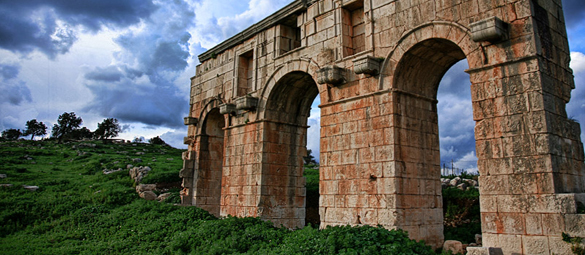 |
| |
| |
Home Page >> Around Kalkan |
| |
Activities Around Kalkan |
A main reason that people from all around Turkey choose to visit Kalkan is its wealth of beautiful beaches. Many consider them picture perfect, with soft yellow sand and crystal clear turquoise water; it is easy to spend entire days lounging at the beaches. But there is more to do at the beaches than merely lie in the sun. Many areas offer various water activities such as kayaking, jet skiing, canoeing, tubing, boat riding, snorkeling and scuba diving. The diving off of Kalkan is fabulous, with many types of dives offered, including wreck dives, reef dives, and wall dives.
Even though much of the area surrounding Kalkan can be seen by land, taking a boat tour opens up a world of exploration. Typical tours include visits to coves and bays inaccessible without a boat, so make sure to bring a camera. The inland activities in Kalkan include trekking, sightseeing, and even paragliding. As an area rich in culture, there are many sites to be seen around town.
|
|
| |
| |
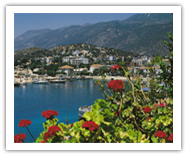 |
Kas
The marriage of beauty and the deep blue eyed Mediterranean Sea. In Kas, the center of the historic Lycian Region, the Taurus Mountains embrace the sea as they continue to the great depths of the Mediterranean Sea. The area is rocky all around and this helps to keep the bay crystal clear.
Kas is a small historical town on the south coast of Turkey. It was one of the most important marine cities and wine production sites of the Lycian civilization and is now surrounded by rock tombs and ruins of the ancient city Antiphellos.
|
Right across Kas, there is the Greek Island Nisos-Costellorizon. It is only 3 miles away from Kas. There are daily excursions by boats to Nisos-Costellorizon and also to another antique city of Lycian Civilization called the Kekova Island.
Once you decide to come to Kas, you must arrange your flight to Dalaman or Antalya Airports. Kas is right between the two airports. 150 km. from Dalaman and 180 km. from Antalya airport .
Kas is a lovely town surrounded on three sides by mountains. In Kas you can hire a water taxi to take you to a favorite bay, cave or beach along the coast. The swimming and diving are excellent in the clear cool waters around Kas.
Kas was once the site of an ancient city Antiphellos. Today the only remains of this Lycian city are the rock-cut tombs and sarcophagi. You can wander through the streets stopping to examine the souvenir shops that offer Turkish handicrafts, leather goods, silver items, cotton clothing and handmade carpets. After shopping, stroll along the flower-lined Akdeniz Promenade or relax under the shade of a palm tree. There are many bars and restaurants in Kas that offer plenty of night life. |
|
| |
| |
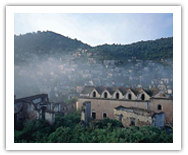 |
Kaya Village And Gemiler Bay
A few kilometers from Fethiye, climbing past the ancient fortress and rock tomb of King Amyntas, the pine trees give way to the bucolic landscape of the Kaya Village. Here a dwindling number of local families till the land and tend their animals. Some of the old Greek stone houses have been carefully restored to provide atmospheric and peaceful holiday homes. Visitors can walk, cycle or even horse-ride around the pathways and lanes of the valley, pausing at the simple teahouses, restaurants and general stores or continuing the few kilometers down to the Gemiler Beach.
Perhaps everyone's most vivid memory of Kaya Valley is the haunting choreography of the houses, shops and churches of the once thriving Greek town of Levissi. |
This early Christian Island dedicated to St, Nicholas can be visited from the Gemiler Beach below Kaya village or while on one of the daily boat trips out of Oludeniz. |
|
| |
| |
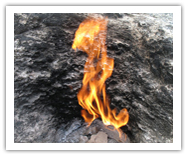 |
The Lycian Way
The Lycian Way begins near Oludeniz and ends just before Antalya, taking in choice mountain landscapes and seascapes en route. It follows 500 km of ancient footpaths and mule roads that linked the villages of the Turquoise Coast.
What really distinguishes this walk is it's intimate, almost careless relationship with history. Lycian, in particular enjoyed a period us ascendancy and unique culture before falling into the hands of Alexander the Greta's successors and then the Romans. Later, Arabs, Crusaders and Genoese established themselves.
|
Traces of all these hands are visible still, and nowhere more so than along this path, their romance and charm enhanced by the old stones lying naturally among the scrub and goat pastures. Tombs just out of mule tilled fields, sections of columns are stacked in the hedges.
There are castles, harbors, forts and lots of vernacular monuments too: sheepfolds and cobbled mule tracks, where the herders take their flocks and where the peasants repair for coolness in the summer.
|
|
| |
| |
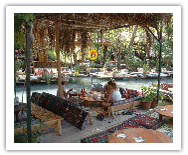 |
Saklikent And Butterfly Valley
Saklikent Gorge ("Hidden City") is the longest and deepest gorge in Turkey, 18 km long and so steep and narrow that the sun does not penetrate the water, leaving it deliciously icy-cold in the summer. Once inside, water-sculpted limestone canyon walls soar above you.
Saklikent Gorge is a beautiful place and a great place to explore. Be sure to bring submersible shoes as you will sometimes be walking in shallow water or mud. Plastic shoes can also be rented outside of the gorge. The gorge is approached along a long wooden boardwalk above the river. Once inside, you reach the Ulupinar springs where water bubbles up under great force from the base of the cliffs and you wade across the river into the gorge proper to begin your walk. The walk is easy for 4 km, after that a rock slide blocks the passage for all except rock climbers. |
Butterfly Valley with it's untouched nature, most amazing beach and basic facilities (no electricity, TV or any earthly possessions) - only a small restaurant and simple beach huts - is a total relaxation destination. This valley is an interesting canyon with steep cliffs up to 350 meters high and stretches back from the cove some 3-4 kilometers. |
|
| |
| |
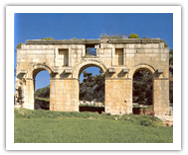 |
Patara
In the heart of Lycia, Patara is best known for its beach, eighteen kilometers of soft white sand, backed by majestic dunes and in recent years the winner of a "best beach in the world" survey in the Sunday Times.
Evidence of its former glories as the principal port for Lycia and an important Roman town can be seen at the extensive site , still not fully excavated. Here too stood the Hellenistic oracle of Apollo , thought to rival that at Delphi and a further claim of Patara's fame is as the birthplace of the fourth century St. Nicolas , the original Santa Claus. |
Patara beach should not be missed with its gorgeous landscape and great swimming. It is a national park and home to many birds, also the breeding ground of the endangered Loggerhead turtle.
The beach is an 18 kilometre-long strip of sand bordered on its ends by mountains and along its length by sand dunes and the large marshy area which once was the celebrated port of Patara. |
|
| |






